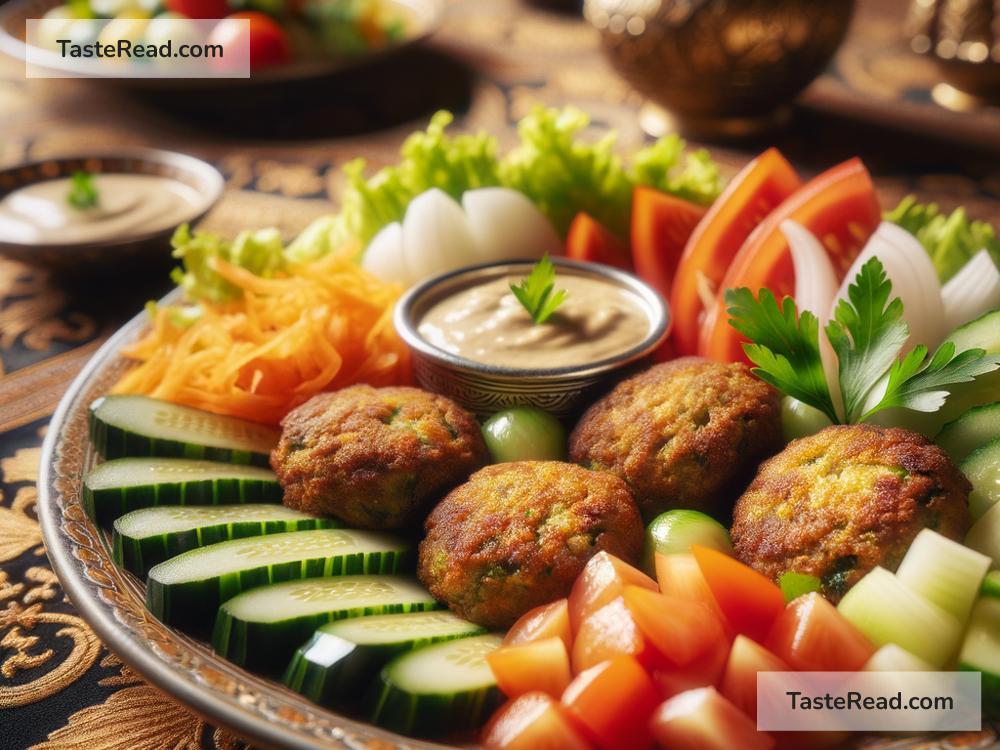Delving Into the Delicious Past: The Egyptian Falafel Journey
Picture walking through the bustling streets of Cairo, where the aroma of freshly made falafel wraps itself around your senses, inviting you to take a bite of this golden, crunchy delight. But have you ever paused and wondered about the story behind these mouth-watering morsels? Let’s take a fascinating journey back in time to explore the history of the Egyptian falafel, a dish steeped in tradition, flavor, and cultural significance.
The Humble Beginnings
Falafel, or “ta’ameya” as it’s known in Egypt, has a history that’s as rich and textured as its taste. While the exact origins of falafel are a bit of a culinary mystery, with several countries claiming its creation, the Egyptian version has its unique spin and story. It’s believed that falafel dates back to the time of the Pharaohs, serving as a testament to its deep-rooted presence in Egyptian culture.
Unlike the chickpea-based falafel found in many parts of the Middle East, the Egyptian falafel is primarily made from fava beans, a staple in the Egyptian diet. This difference not only gives the Egyptian falafel its distinctive taste but also ties it closely to the land’s agricultural heritage.
From Fava Beans to Flavorful Delight
So, how did the humble fava bean transform into the beloved falafel? The journey begins in the fertile Nile Delta, where fava beans have been cultivated for thousands of years. These beans were an essential source of protein for the ancient Egyptians, making them a vital part of their daily diet.
The genius of turning fava beans into falafel likely came from the need for a nutritious, meat-free dish during religious fasting periods, particularly in Coptic Christian traditions. By soaking and grinding the beans, mixing them with herbs and spices, then frying them to perfection, the Egyptians created a dish that was not only delicious but also packed with nutrients.
A Dish for All
One of the most captivating aspects of falafel is its universal appeal. It’s a food that transcends social and economic boundaries. Whether you’re a pharaoh or a farmer, the allure of falafel remains the same. This accessibility has contributed to its popularity, making it a staple street food enjoyed by Egyptians and visitors alike.
In Egypt, falafel is more than just a quick snack; it’s a cultural icon. Often served in a pita bread with salad, tahini, or hummus, it’s a meal that embodies the essence of Egyptian hospitality and generosity. It’s common to find falafel vendors on almost every corner in Egypt’s cities, each with their secret blend of herbs and spices, adding to the dish’s rich tapestry of flavors.
The Journey Beyond Egypt
While falafel holds a special place in the heart of Egyptian cuisine, its appeal has crossed borders, making it a global sensation. As people from the Middle East migrated to different parts of the world, they took their culinary traditions with them, introducing falafel to new palates.
Today, falafel is celebrated worldwide, with countless variations and interpretations. From the street food vendors of Cairo to the upscale restaurants of New York, falafel has captured the taste buds and hearts of food lovers across the globe. Yet, at its core, whether it’s made with chickpeas or fava beans, falafel remains a simple dish with a rich cultural narrative.
A Taste of History
The story of the Egyptian falafel is a testament to the power of food in uniting people, preserving culture, and telling the stories of our past. It’s a reminder that even the simplest ingredients, when combined with tradition and creativity, can create something truly magical.
So, the next time you bite into a crispy, flavorful falafel, remember the journey it has taken from the ancient fields of the Nile Delta to the bustling streets of Cairo and beyond. The Egyptian falafel is not just a dish; it’s a piece of history, wrapped in a pita, inviting you to explore the rich tapestry of Egyptian culture, one bite at a time.
As we celebrate the humble yet extraordinary falafel, let’s appreciate the culinary traditions that bring us together and the stories that make our food much more than just sustenance. After all, in every bite of falafel lies a story waiting to be told, savored, and shared.


